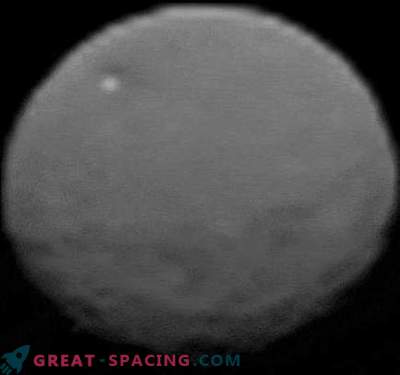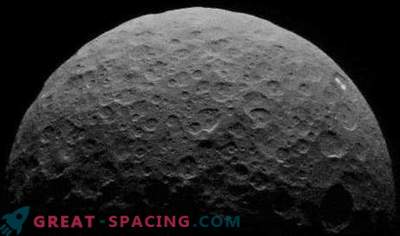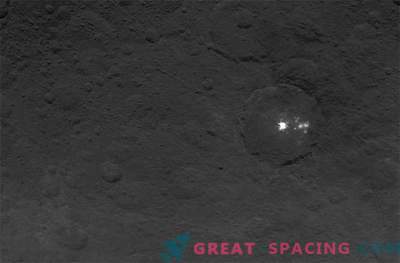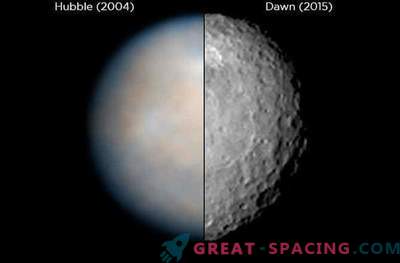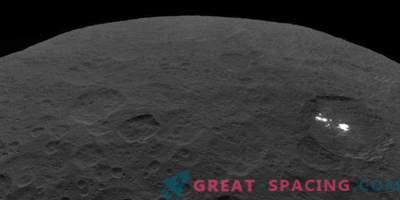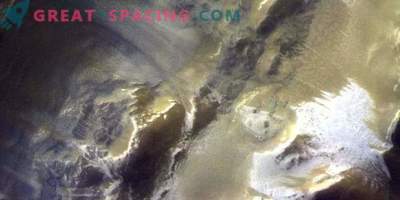
Dawn’s mission comes to an end after 11 years of research in planetary science, mining amazing samples and unprecedented breakthroughs in space achievements. This project was extended several times to study Ceres and Vesta, which together cover 45% of the mass of the main asteroid belt. Now the spacecraft is running out of key fuel (hydrazine). When this happens (September-October), Dawn will lose its ability to communicate with the Earth. For decades, it will rotate in orbit around Ceres.
It is sad to watch the end of the mission, but scientists are proud of the many achievements. The spacecraft not only revealed the secrets of two amazing worlds, but also became the first vehicle for visiting two orbital bodies during one mission.
Dawn launched Cape Canaveral with the Air Force in September 2007 using the Delta-2 rocket. In 2011-2012 the ship studied Vesta, taking pictures of craters, canyons and mountains. In 2015, cameras caught cryovolcanes and mysterious spots on Ceres. Later it became clear that this could be salt deposits. The legacy of Dawn is that he studied the last two unknown worlds in the territory of the inner solar system.
Engineering Techniques
Dawn is the only spacecraft spinning around bodies in the asteroid belt. In addition, his orbital path touched two extraterrestrial directions. These feats managed to accomplish at the expense of the ion engine (an extremely efficient power plant). The ship showed amazing endurance. The device approached Vesta in 2011 and explored the surface along with the core for 14 months. In 2012, engineers made a maneuver and led two years through an asteroid belt to set Ceres into the orbit of the dwarf planet, where it has been receiving data since 2015. The mission was aimed at these two objects, since they function as temporary capsules — they remain intact from the time of the early part of the system’s history.
Amazing Ceres
On the surface of the dwarf planet was able to find the chemistry of the ancient ocean. Some of the bright spots turned out to be brilliant salt deposits, mostly of sodium carbonate, breaking out from under the bark. The data indicates that dwarf planets (and not just ice satellites like Europe and Enceladus) were able to have oceans. There are also hints that fluid may still remain on the surface of Ceres, and some areas have saved geological activity until relatively recently.
One of the most significant discoveries is located in the crater Ernutet. It found an abundance of organic molecules - the building blocks of life. The truth is not yet clear whether these molecules were formed as a result of biological processes.
Vibrating Vesta
In the asteroid, Vesta managed to find craters, and also to show that the northern hemisphere survived more powerful attacks than previously thought. It is believed that large objects resided in the early asteroid belt. In 1996, the Hubble Space Telescope transmitted images of a mountain in the center of the giant crater Reyasilvius. Dawn images showed that the formation is twice as high as Everest. In addition, there are observed canyons that are larger than the Earth's Grand Canyon.
Closer to the end
Dawn continued to collect high-resolution images, gamma-ray and neutron spectra, IR spectra and Ceres gravity information. Almost every day he receives an image at a distance of 35 km from the surface. This will continue until the last drop of hydrazine is consumed.
Ceres is interested in scientists chemistry related to the emergence of life, so NASA follows clear protocols of planetary protection for the disposal of a spacecraft. Cassini deliberately plunged into the atmosphere of Saturn, but Dawn will be left in orbit. Engineers have thought of everything so that for at least 20 years the ship could not fall on this world.



